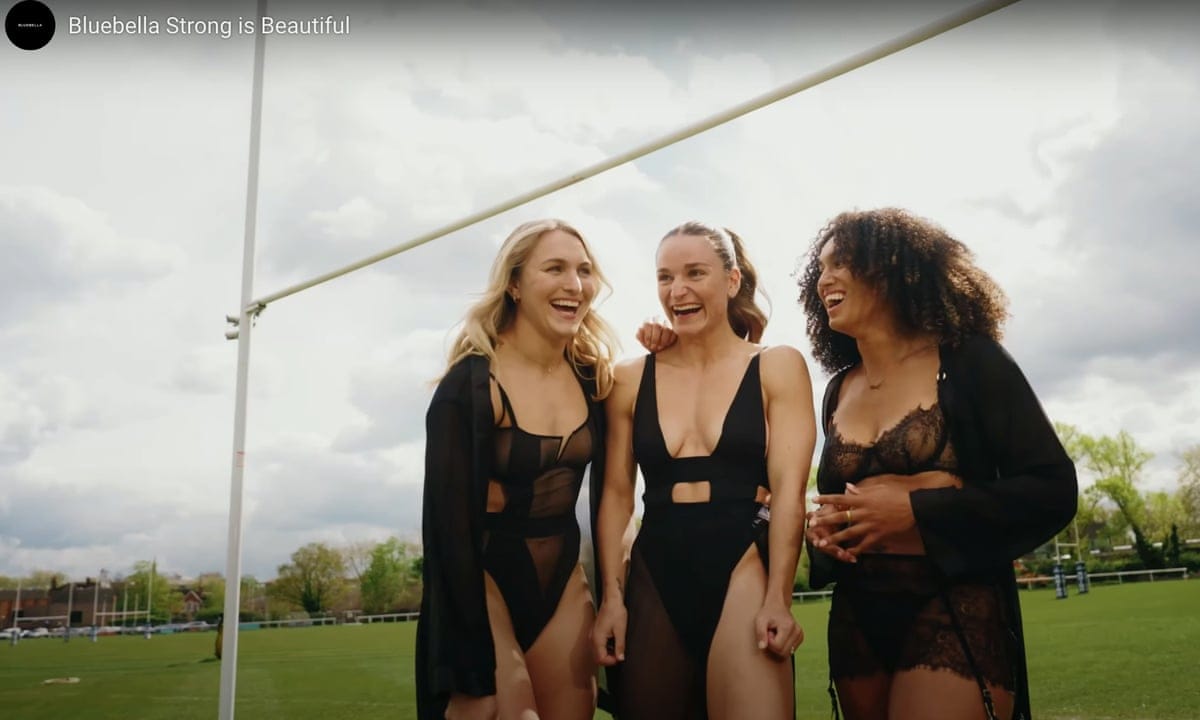Female empowerment campaigns face potential pitfalls as evidenced by a recent backlash against Bluebella's new advertisement featuring Team GB Olympic athletes Jasmine Joyce, Celia Quansah, and Ellie Boatman. The company sought to encourage girls to embrace sports through its #StrongIsBeautiful campaign, which showcased the women in lingerie while participating in rugby matches.
The ad depicted the athletes engaging in their sport amidst muddy grounds and worn-out apparel, accentuated by suggestive attire that some described as bordering on fetishistic. Despite Bluebella's intentions to celebrate strong and powerful bodies often ignored by society, critics labeled it "highly sexualised."
Notable figures such as tennis legend Martina Navratilova called the advertisement regressive and sexist, while swimmer Sharron Davies expressed her disapproval. Women in Sport also voiced their disagreement with the campaign's portrayal of athletes in revealing clothing.
This instance raises questions about the role of sportswomen within advertising contexts. The commercial realm is no stranger to sexualizing female sports figures, but many wonder if there's an inherent difference that makes such ads more acceptable when featuring male athletes.
Despite Bluebella having previously conducted successful campaigns featuring female athletes without facing similar backlash, this instance demonstrates the continued challenges and complexities surrounding female empowerment in advertising. Critics argue it's not enough to merely depict women in sportswear; instead, there should be a more nuanced approach that respectfully showcases their dedication to their sport without resorting to sexualization or objectification.
Aside from the campaign controversy, funding disparities between male and female athletes have long been an issue. A recent discussion with Olympic weightlifter Emily Campbell highlighted this struggle for financial support, as women in sports receive significantly less sponsorship than their male counterparts. This underscores another dimension to consider when assessing the impact of such advertisements on society's perception and treatment of female athletes.
In conclusion, Bluebella's campaign highlighted the challenges faced by the brand in promoting a positive image for female empowerment without unintentionally falling into patterns that reinforce stereotypes or objectification. As societal attitudes continue to evolve and demand greater respect towards women in sports, brands will need to navigate these intricacies more thoughtfully when designing future campaigns.
Read next

Rafael Behr Predicts Starmer's UK Political Realities Will Face Turmoal Shakeup Soon
There's plenty happening politically across Britain, but change isn't sweeping through as expectedly or rapidly enough to shake things up significantly within Westminster news cycles. The government has struggled from its inception and a contest for Tory leadership continues to keep the political scene bustling on

Exploring Historical Solutions for Modern Global Water Conflicts: Insights from a Bygone Spanish Court | Roman Krznaric
Every Thursday at noon, outside Valencia’s cathedral, nine cloaked figures gather beneath its west door – one distinguished by their banded cap and ceremonial harpoon. This weekly assembly marks the enduring presence of the Tribunal de les Aigües (Tribunal of Waters), potentially Europe's oldest court of justice.
For

Potential Deepfake Impact on Future Elections: Will 2024 Mark a Turning Point for Authenticity Concerns? | Samantha Floreani
As long as the phenomenon of artificially generated or altered content depicting false events has existed in politics, concerns have been raised about its implications for public discourse and democracy since at least 2018. This was demonstrated when a deepfake video surfaced that falsely portrayed former President Obama insulting then-President

